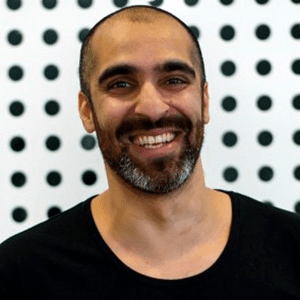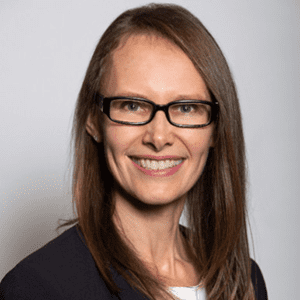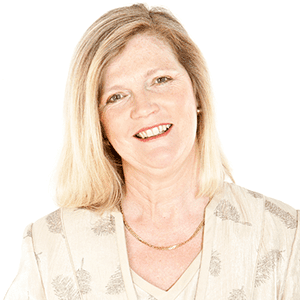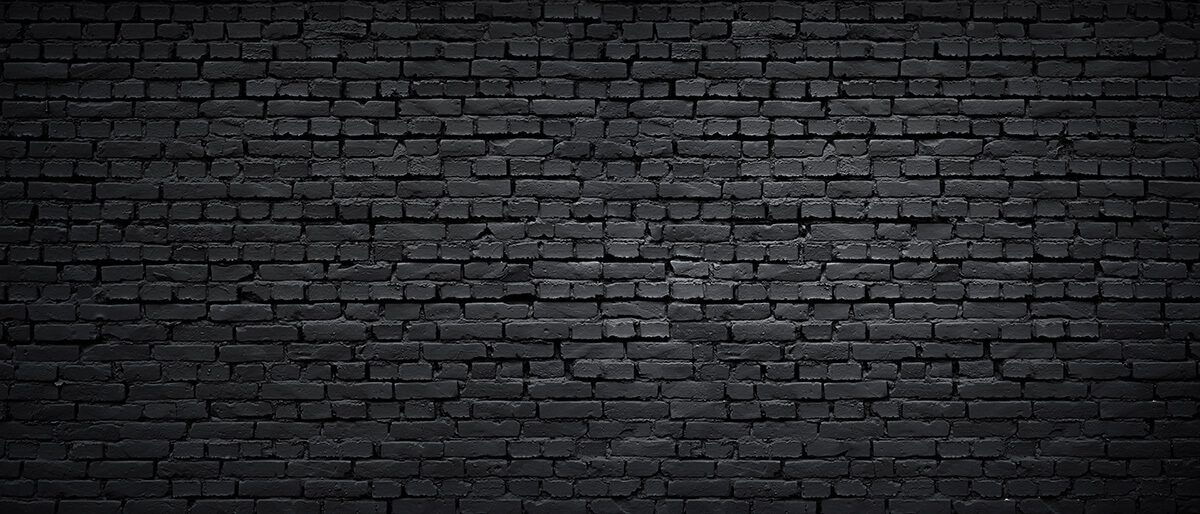
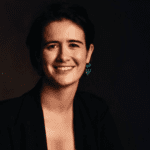
#41: The future of work is hybrid
Over the last twelve months, many businesses were forced to shift their ways of working from a traditional approach to something completely different in order to continue to operate. However, as the recent disruption starts to lift, it is time to reevaluate the future of work and design an approach that is both productive and human-centred.
In this TEC Live episode, Maja Paleka, co-founder and director of Juggle Strategies, partner at FlexCareers and consultant at Gemini3, talks about the opportunities business leaders and CEOs now have when it comes to elevating productivity and engaging their workforce.
Maja explains how the future of work is hybrid. And how the power of choice is the key to creating deeply empowered and committed teams. Employees understand that a job still needs to be done no matter the location or time, but through choice and hybrid working, they are entrusted to ask; What am I working on today?, What is the right approach, and who do I need to help get the best job done?
So how do you make it actually work:
- Design – you need to design what good looks like to you, your team, your customers and your business.
- Co-creation – you need to work with your team to gain commitment and outline how you all plan to make this work.
- Accountability – you need to regularly review how the business is performing and evaluate if you are achieving your goals efficiently.
Once your team-designed hybrid work strategies are in place, your business will start to see the following benefits:
- More productive hours
- Removal of busywork
- Better outcomes delivered
- Real trust
- Greater balance
Stephanie: Welcome to TEC Live. Stephanie Christopher here, CEO of The Executive Connection. We connect leaders with a trusted network of people who help them succeed.
Leah: Stephanie, there’s been quite a few guests that you’ve had.
Stephanie: Yes.
Leah: And a lot I know are up there in your favorites.
Stephanie: Yes.
Leah: But I know there’s one that you keep talking about.
Stephanie: That would be Maja Paleka, who happens to be our guest today on TEC Live. And Maja, for those of you who might be absolute TEC Live subscribers and fans, last spoke to us on the podcast two years ago. Maja Paleka is a founder of Juggles Strategies, a consultancy that helps businesses implement, well, flexible work practices is a very minor part of what it is really, but helping businesses engage their workforce to work in newer ways of working and to adapt and deal with the current environment. Maja Paleka, welcome back to TEC Live.
Maja: Thank you so much, Stephanie. I can’t believe it’s been two years. What a different there.
Stephanie: Two years. I had to listened to it recently because we used it in a professional development session with our team.
Maja: That’s awesome.
Stephanie: And I thought let’s talk about the future of work as we’re all changing and coming back. And then I listened to it and thought, this is the most dated thing I’ve ever heard. I was a dinosaur. You were trying to help me get my head around people working from home and the world has changed and keeps changing. If I said to you now, let’s talk about the future of work, what would that look like?
Maja: It’s such a good question and I was kind of thinking about that on the way here as well. And I don’t even know if we really know, if sort of there is such a thing that if you went to go and look up future of work, right? What everybody would sort of define it and be very clear about. I think it’s become just normality. It’s not this thing that’s coming in the future. And we were talking about that a little bit. I remember when we did the white paper, I was like, ‘You know the future is kind of now.’ But it’s not just a lived reality rather than sort of an intellectually, conceptual.. exactly, right?
We knew, even at the time I remember that conversation, we intellectually all know that this is to be true and that this makes a lot of sense, but we’re not living in day to day. Now it’s kind of become this lived experience. And again, it’s not everywhere in the world. Australia is miles and miles and miles ahead. And we have had an opportunity and we have an opportunity to play around with some of these concepts in a much different way. But I mean really on a practical level, on a day to day level, the future of work is hybrid in many ways, in terms of what it looks like in how people are looking to work and show up to work and design work. I think in other ways it’s just really more a reality, a lived experience, I think for quite a few people.
Stephanie: And we all lived the experience. I’m going to get back to hybrid. 12 months ago now, probably 12 months ago this week, you dropped me a note and said, ‘Let me know if I can help in any way.’ Because every business in Australia and New Zealand going to be full-time remote. And it was a big shift and I look back and think my team was anxious about having to move to work from home, which now that they’ll laugh about. So that shift happened and that’s old news now. That’s old news. I want to come back to that word hybrid. So the current lived future is hybrid you said, what do you mean by that?
Maja: Yeah. So maybe I’ll take a step back even before I go to hybrid and I will, I promise come back to it, is talk about that experience that we had over the 12 months. In many ways, people sort of said, ‘Oh, we learned everything we needed to know in that time.’ Right? Reality is, what we went through was not flexible. It was not really the reality that we want to be living in, right? It was a forced remote experiment in many ways. And when you get into that environment that we worry, there was zero choice. There was really zero ability design, the way I work. I was stuck at home. I could not leave and no matter what I was doing or whatever the activities that I was doing, what mode of work I needed to be in, that was it. That was the only option.
So we always used to say in the past that we were stuck in the ways of working before and even though, as you said, we wanted to change intellectually. We understood we needed to change. It was really hard. Humans are built for status quo. We are really creatures of habit. And we needed a nudge outside of that. Well, that pandemic was we got a shove!
Stephanie: We got a shove.
Maja: Shove, right? Exactly. But it was too far, right? It was in a completely different direction. And so I always sort of said to people, We don’t want that, that is not what we ever talked about and-
Stephanie: Am I hearing that’s just a version of what it was before?
Maja: Yeah, absolutely. It was the extreme, right? Now, to be fair some organisations may go down a hundred percent remote side of things, but he will be intentional. It will be designed for that. We didn’t kind of have that choice. We made it happen. Oh my goodness. I mean, your business turned around so, so fast and made it work, right? And that’s why we sort of proved to ourselves and to everyone, it can happen. But it wasn’t by choice and it wasn’t sort of really that we kind of went, ‘Well, this is the best of all the options.’ Where we’re going to now and we’re lucky enough in Australia to be able to consider and design for and deliberate about what is the right option, is a combination of certain things. And majority of the organisations that I look at now, especially knowledge work. So I’m going to be very clear about that, that if we are in customer service, if we are in a manufacturing.
Stephanie: Retail, whatever.
Maja: Absolutely.
Stephanie: You have to be there.
Maja: Right. Different story. We don’t have that choice anymore. Even though people are kind of re-imagining their businesses and all that kind of stuff and more on what I can do and that’s whole different story, but where in knowledge work, what we did gain, we learned a lot and we kind of go, actually, we now have choice. So how do we from a position of choice now design? And that to me was the thing that I was always so excited about and that I’m so excited to see that people are actually realising that, hold on, once I have choice, I can now actually think about what is the work to be done today? And what is the best possible way for me to get that work done? Not only considering location, but also time, right?
Sometimes both those things actually really good sort of things to play around with. And that leads us into hybrid, into sort of saying hybrid is some combination of location of work, or whether that is remote from home, whether that is from a cafe, from a customer site, wherever, right? Different location, and also very much in the office. For a majority of organisation, there is still a job to be done by the office. And I think that’s really keen if we want to get into that side of things as well. I think there’s some really interesting things to think about there. But it’s some combination, but deliberate thought through approach. I always used to say, human centered design, right? Like let’s think about what am I working on today-
Stephanie: That’s the engineering.
Maja: Yeah, I know. I can’t help myself. I’m sorry.
Stephanie: Okay, I really like that. Sorry. I interrupted you. What I’m working on today. Keep going.
Maja: Yeah. So what am I working on today and what is the best possible way for me to get that work done? So if I am based on what my job needs for me today, what my deliverables are, my clients, my customers, if I’m in a heavy-duty collaboration problem solving mode, I probably need to be with other people because we haven’t actually quite learned how to do that collaboration, asynchronously and remotely that well yet. But sometimes I’ll choose to go into the office and I will make sure that I’ve planned with other people because I can’t assume anymore that everyone else is going to be there. This is the other thing.
So there is some preparation and planning to be done, but I have to actually think about it and then go, okay, I’ll go and hang out with others and we’ll be around the whiteboards and we will nut out this problem because that’s the best way for us as a team if we choose to do that. If I’m in deep work mode and in knowledge work the only way we get to innovate, that we get to problem solve, is if we allow time and space for people to think deeply, to focus deeply and an open plan office is the worst place in the world for that. Then I might choose a different location for that. And same with time. If I’m a morning person and I need some deep work, I might get up before anybody’s up and I can do a few hours even before then. So it’s really that deliberate thought through design of work, considering location and also time as well.
Stephanie: That’s good. I want to talk about some of the challenges with that, and let’s start with me. Less than 12 months ago, eight months ago, I declared I’m never leaving my bedroom. I’m so happy here. I love it. It’s wonderful. This is how I work now. Well, I moved on from that, and we don’t call it the office anymore. We call it campus with the idea that, there’s all sorts of campuses and your own room at home is one of the campuses, but I’ve been on campus every day, this week. Doing a lot of collaboration with people in there and whiteboards and stand-ups and then big number of the team are at home.
Now, what’s happened is, I’ve realised it’s increased the pressure on me at work. Because I’m running really fast with the face-to-face I’m doing, then I’ve got to worry about team channels, emails, texts. I haven’t got time to do all of that. And that’s the risk with hybrid. Oh, and let me ask you, how big a risk is that with hybrid then that you’re supposed to be managing all these channels when it would be so quick if I could just say, ‘What do you think of this?’ Instead of I have to stop what I’m doing, who I’m talking to go and find where I’ll find that person and get onto them. Tell me about that.
Maja: Absolutely hybrid is the hardest thing to get right, right? Of all three options, if we think about a hundred percent remote or a hundred percent in or hybrid it is actually the one that we need to put the most work in. And I won’t sugar coat it, it takes some work to actually get it right. The big thing that we got to go through is almost the approach. And so what we’ve been saying to our clients, is this takes a framework and this takes a bit of a different implementation than we did before. So in the past, you and I we’re talking about, and I know last time in the podcast I was saying, ‘I don’t like flexible working as a word anymore because it had so much stuff associated with it in the past.’ But it really was the way we were looking at it, right?
It was certain individuals that had certain reasons in their life and they used flexible working for that, right? So it was almost an individual conversation that we had to have and that was fine, right? We arranged around their work, around whatever needed to be do, but it was on them. The onus was on them and their manager to make it happen. In a hybrid environment, it has to be a team-based approach. There is no way we can get this to work if we’re having sets of individuals that are designing in isolation, in vacuum. Because what happens is exactly what you said is, someone’s working but they don’t understand the impact on you and they haven’t considered that. Or the team itself hasn’t actually defined any ways of working and any commitments and any ways that they’re going to work together, sort of when things become difficult, right?
So you have to have a bit of a sequence of approach in how do you do that. We talk about it in terms three steps, right? So first one is designing and getting very, very clear of what good looks like. And that is at three levels of the organisation, right? So one for you at a TEC level, everybody needs to know what does good look like for us to be working in a hybrid environment? And usually we’d say, come up with a set of principles or behaviours or some guidelines that you want people to consider and keep in mind. Usually people talk about things like teamwork still being important, possibly culture, trust, being a really, really big one, things like that. So it’s a deeper conversation that goes back to your values and who you want to be and how you want to be sort of what type of culture and organisation you want to build.
Then you go down to the team level. So each functional team, but also the teams just working on a project. So not just departments and where we belong to. We sit down and we go like, how are we going to make this work? What are our commitments to each other? And how do we on a day-to-day basis operate? So starting with what does good look like for us? What are our defining moments? And those defining moments may mean we come into the office for those defining moments. How do we get in touch with each other? Right? What tools are we using and how are they operating on a day to day basis? If you’re in the office and stuff and meetings, what does that mean for the rest of us that might need something from you? Right?
So there is a design process, a co-creation at a team level of certain commitments. So we know what we’re accountable for to each other. And only then do I as an individual do some planning because I understand what my impact is on others, with the choices that I make in terms of how I work. So that’s sort of the first clarity bit. Then we get into accountability, which sorry, autonomy, which is where people sort of go and do that design and we give people tools and things like that and what’s the best way to do that. And then the third bit is about review and we call it accountability. But it’s about a review process, where we regularly get together and go, is this working? How are we tracking? And what needs to be shifted? What needs to be changed? Do we need to get together more often, less often? Are we getting together for the right reasons or not? And how are you, those days that you’re working remotely, how are you impacting everyone else?
And I think if you had a bit more clarity than you possibly yesterday, that was a tough day, wouldn’t feel that you needed to be pulled in so many directions because your team would understand what it meant for you to be offline or maybe in the office. And also possibly if you were trying to do some stuff, maybe everybody would have come together for that time, right? So it takes a bit of design and it takes… But it is a learning experience. And it is about continuing that conversation on a day to day basis. It is tough, but there is a ton of good, right? So it’s one of those balance things, right?
Stephanie: Absolutely. And I really liked that part you said about review because you can change.
Maja: Oh sure.
Stephanie: You can change quickly.
Maja: Yep. And it will change.
Stephanie: Like we all have to.
Maja: Absolutely.
Stephanie: In Sydney before Christmas, we just had to say, no one on campus at all. Thanks. Half of you are locked down anyway and we had to change quickly. So what are the benefits of this are you saying then?
Maja: The ultimate thing is, is I think the organisations have realised, well, one thing I think that deep work that we’re talking about. I think for the longest time, we kind of really lost the ability to do deep work. Because we were in open plan offices, people were removing themselves and doing that only at night or whatever they were kind of away from everyone else. And the amount of people we see here now coming back and saying, this is why there’s a reported increases in productivity. People are actually getting time to concentrate, into focusing to get stuff done. So that is something that we want to hold onto, right? That is something that we want people to continue to tap into. Because without that, as I said, there is no real kind of chunky problem solving that we can do on our own. The reason that getting through things that need to get through sort of thing at a level that we were seeing that happen before.
There is the incredible increases in terms of engagement and loyalty that people are sort of seeing. So that is something that lots of organisations don’t want to get let go. Because they’re seeing the way that people have really bought into this because it’s made a really big difference in their personal lives from an individual perspective. And I was talking there from an organisational perspective, from an individual perspective, we know that, right? It’s quite obvious. It’s commutes reduction, people getting a chance to really kind of increase their wellness, all that type of stuff from other obligations and personal things that they have in their lives. Trying to manage that a little bit easier.
But I think that when we asked this question, we asked them regularly for every single workshop that we say, what is your benefit? Higher productivity and the ability to focus is actually one of the top two. work-life balance is definitely there and that’s there, but the ability to actually do my job in a better way is there. So we don’t want to let go of that, right? We think it’s really, really important. And as I said, from an organisational perspective, I think everybody has realised that this is the other thing as well. In the past flexibility was kind of, as I said, for a certain group of people, we’re now seeing CEOs go, ‘Oh my goodness this was never for me, this was not a thing for me.’ Right? ‘It was for my staff and I was really proud of the policy that we had and I was very much encouraging that, but I had no idea.’ And so I think this is the other thing, is that it’s a lived experience at all levels of the organisation.
Stephanie: And I absolutely take your point there, Maja about the positives for everyone. And you said something there about the commute. I think that’s huge.
Maja: Yeah.
Stephanie: Isn’t it ridiculous that we expected as part of your contract of being at work that you spent so many unproductive hours in a day and we expected that of everyone. And it was kind of, ‘Well, I live an hour and a half away out of town.’ Whereas the norm in my organisation now is, ‘Well sure, come in after the traffic.’ And one of my senior leaders today said, ‘God, that just took me about 14 minutes.’ And if she came and pick her up, it could take her an hour and a half. And it’s lovely that, that’s been forced now that we realise that’s ridiculous. You can listen to podcast, but it’s so much better and people are starting work at home and they’re coming in. I don’t care when travel time is, I don’t care if that’s in your working time or not. And that’s been a huge benefit for me as well.
Maja: Yeah, absolutely. Absolutely. And that’s-
Stephanie: Even though I literally live six minutes from the campus but-
Maja: Or 20 something if you’re-
Stephanie: Well, exactly. When you’re in traffic. So I think that. And the fact that for us working hours have completely gone. It says on your contract 8:30 till 5:00 that’s just silly.
Maja: Yeah. And this is the thing that I was so again, excited about is, we’ve actually had to get better in managing outcomes. Remember that conversation from two years ago. It was the thing I was like, Well, we need to stop. Let go of hours. Who cares?
Stephanie: Yeah, that’s right.
Maja: Are they getting their job done, right? Are people getting the job done? And we struggled with that because it actually, again, that took a little bit of effort. Now when someone’s miles away from you and you’re seeing them just on Zoom, you have to actually start figuring out how do I know whether they actually getting anything done? So we got better at that. And to me, I think we’re going to remove a lot of unproductive behaviour and busy work out of our businesses. So that focuses on what is the important stuff and is this person able, and are they actually delivering?
I mean, that’s an incredible skill, right? To have as a leader. To be able to really quickly, rather than just watching them coming at six o’clock in the morning and leave at seven o’clock at night and go, aren’t they committed, right? But really we weren’t very good at going actually, how much are they delivering, contributing to this business in the right way and all that sort of stuff. Now it’s like, I don’t really care where you are, but I can see that you’re actually making a really big dent and contribution. Amazing. So these are the skills I think that we developed in that period and that I think have been just so beneficial. The second big one that I always really want to highlight is trust, right? We always used to say we trusted our people, but pretty much I would say 80%-
Stephanie: As long as they were in front of me and I knew that their lunch hour was half an hour or something like that.
Maja: Yeah. It was just easier, right? It wasn’t even an intentional thing. But I think we would say that we trusted our people, but it was really, really difficult to kind of go, well, do we trust them to just go home for a year to get their job done? If I asked that, like 80% of CEOs would go, ‘Oh my goodness, yeah absolutely.’ Right?
Stephanie: No, I can’t afford it.
Maja: Yeah. And now we’ve had to do this. And one, I think every single executive has gone, ‘Yeah, we can absolutely trust our people to do the right thing.’ Right? They let us continue operating our business out of their living room. I love that a CFO told me that once. ‘Aren’t we privileged that our people let us continue operating the business out of their living room, we are indebted to them.’
And I thought that was such a wonderful perspective, right? Because it can kind of be the other way around most of the time, but it was a signal of trust and so if anything, that two way strength of trust is just gone up. I mean, we’ve known that way before the pandemic, that is one of the strongest things you can have in an organisation. If you can have that as a basis of how you operate and how you lead, you’re going to be in a much, much better position.
Stephanie: Yeah. Yep. And the other thing that I think really shifted as well from a trust perspective, say two years ago, if someone said, ‘My toddler is sick, so I’m going to work from home.’ And it was easy to think, ‘Well, how are you going to work from home with a sick child?’ Well, that’s normal.
Maja: Yeah. Difficult to figure it out.
Stephanie: We had to figure it out.
Maja: Yeah.
Stephanie: Okay. So choice is important. Design is critical. Accountability has been proven and let’s hang on to everything we’ve learned about implementing and designing for accountability. Trust is what will make it work and that human centered design, but also that empathy.
Maja: Yes.
Stephanie: Think about what my choice will mean for my teammates?
Maja: Yes.
Stephanie: And how that could be? And then also let’s celebrate as our organisations what’s opened up for us all because we’re all benefiting from this.
Maja: Yeah. 100%, 100%. I love that you brought up empathy. I think that’s a really big one and it goes from both ends, right? We are encouraging people, and I think again, the big shift that is important that we own the success of this and we are accountable every single individual to make sure that it works. And that I work within a context of an organisation and of the team and the people that rely on me community or something else. So we absolutely have to consider that. I think in the past people were afraid of some of these ways of working because at times could end up being a bit of an entitlement and that is not the position we want to be in, right? So we want people to have that empathy.
But I also think from the other perspective, so the one other big benefit, and I really just want to highlight that, is the leadership skills that we’ve developed and that we’ve leaned into. Every again, single workshop we do when we sort of say, tell us what’s happened over the little while? They’re like, we’ve connected with our people in a much deeper level. We thought we’re going to get disconnected. Actually, we got to know each other as humans in a much, much deeper level. And we feel that we know each other better. And that levels of inclusion and belonging and all that sort of stuff that people talked about in the past that we’re trying to build actually went up.
But leaders leaned into care and empathy and compassion in a way. And when I speak to some of the TEC groups, we talk about that quite a bit, right? They’re like, ‘Oh it wasn’t really something I had to do very often and now I see the power of it and the engagement that I get back.’ And I really, for me, can we just hold on to that because I think we’re building much more human organisations where people can be engaged and will engage if their leader is still leveraging those skills and recognises the importance of those skills. So for me, that’s a really, really big positive over the last 12 months.
Stephanie: Definitely and a nice place for us to finish, I think. And I think we can finish with, we can also celebrate that our whole broader community that we live in here, I believe has demonstrated over the last 12 months that we actually care about the community interest as well.
Maja: Absolutely.
Stephanie: And that’s one of the things that we’re lucky about where we are and how we can then continue that in our organisations and the way we’re working with each other.
Maja: Yeah.
Stephanie: No wonder I loved having you back. What a great next level of thought-starters you have given us today.
Maja: Thanks, Stephanie. Always a pleasure.
Stephanie: Oh, yeah. Well, for me as a leader and I think for anyone listening to this podcast, so Maja Paleka, thank you very much.
Maja: Thank you for having me.
Stephanie: Discover more about TEC
